Managing hospital security and access control often takes a backseat to other priorities in medicine, like treating patients and supervising staff. However, the protection of patients and their Personal Health Information (PHI) is a critical part of their treatment. Vulnerable individuals with illnesses and injuries depend on their healthcare providers to protect them and their confidential details as they receive treatment. Hospitals can manage a good portion of this protection through electronic security systems like access control.
Issues with Controlling Access in a Hospital
Other priorities often take precedence over managing access in a busy medical environment. Keeping track of who has access is particularly difficult without a strong existing system in place. Hospitals face challenges in access control for several reasons, to include:
- Departments with different protocols. Different parts of the hospital will require different levels of security. Maternity wards, as an example, have extensive security protocols due to the age of the patients. Meanwhile, triage areas may be less restrictive and require more open access for first responders and family members arriving with those needing care.
- High traffic and turnover. In hospitals, foot traffic is both high volume and rapid. First responders and medical personnel may be moving in and out of various locations quickly. Doctors with admissions privileges may show up with short notice. Visitors will come to see sick family members and friends. All this traffic at all hours of the day and night makes it near impossible to manage without a robust electronic access system. Database management also becomes a challenge, as employee turnover is high and access databases become bloated.
- HIPAA violation risk. PHI must always be protected and carefully stored, but the need to access health information quickly could cause unintended breaches. HIPAA violations can be costly for hospitals. These expenses stem from fines and penalties as well as indirect costs like increased insurance premiums and loss of business.
- Higher duty of care. Not carefully controlling who can access patients and their information can result in irreparable harm to these individuals. Medical providers must take adequate measures to prevent this. Hospitals have a high duty of care to patients and can open themselves up to expensive lawsuits when breaching that duty.
- Surveillance limitations. Surveillance cameras are often used to monitor gaps in access control, but this isn’t always possible in a medical environment. Cameras must be strategically placed to ensure the protection of PHI. Caution is critical when reviewing footage as well, to ensure PHI isn’t viewed unintentionally.
Hospital security access control is a full-time job which many medical providers don’t have time to manage. This access control must be seamless enough that key personnel can travel the hospital unimpeded. Electronic security integration can help create a system which is both simple and effective.
Automating Hospital Security Access Control with Integration
An integrated access control system can act as a hospital’s doorman while managing internal foot traffic. It provides a way for hospitals to monitor restricted areas without the need for full-time security. Such a program combines magnetic locks, credentials and access databases to:
- Provide scalable access. An access control system connected to a hospital’s active directory establishes necessary permissions down to a department level. As these employees change departments or end their employment, active directory changes automatically update access databases.
- Control visitors and foot traffic. Hospitals can issue temporary credentials to visitors which include photographs. This helps personnel ensure visitors are who they say they are and don’t wander the grounds unmonitored.
- Create accountability. Credentials are unique to the user. When detecting inappropriate access attempts, this helps hospitals immediately pinpoint the problem and take corrective measures. Unique credentials also help administrators monitor for common security issues, like multiple employees using a single key card or signing in under the same user account.
- Reduce employee burden. By putting the brunt of the responsibly on access control technology, hospitals allow their personnel to concentrate on their patient care duties. These systems also reduce the risk of human error by automating tasks like database management and maintenance checks on equipment.
In many cases, setting up hospital security access control doesn’t require an entirely new system. Instead, a plan is developed which utilizes the hospital’s existing resources more effectively. Combining access control with other hospital security programs like active directories allows administrators to minimize database bloat and scale programs as needed. Such programs make it much easier to protect both patients and the confidential information they share when seeking medical treatment.
3Sixty Integrated provides seamless access control programs that hospitals can use to manage their foot traffic and protect patients and information. Our SiteOwl software even works with your active directories to keep databases and credentials current. For more information, call (210) 545-1770 or fill out our contact form.

